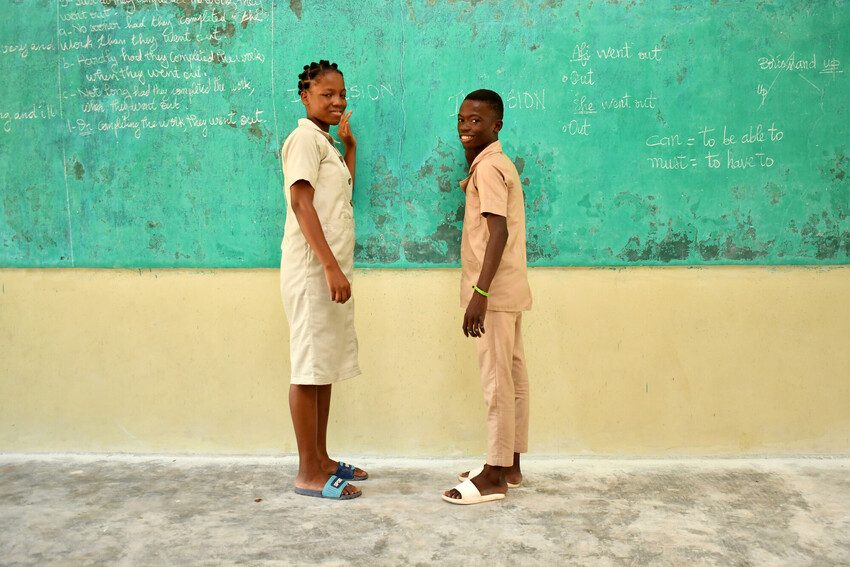Language as a tool for change
Why Plan International embraces inclusive writing.
1 May 2025Inclusive writing isn’t just about confronting and fighting stereotypes — it’s about building equality by Marion Guigon-Lacroix Communication Director, Plan International France.

At Plan International, we champion gender equality in all aspects of our work — including our writing and global publications. It means that at Plan International France, inclusive writing is more than a linguistic choice; it’s a bold statement of values in our day-to-day practice. Language is powerful; it shapes how we think, perceive, and engage with the world around us.
When, as in the French language, professions and roles are expressed exclusively in the masculine form, such as ‘le médecin’ (the doctor), it reinforces barriers and stereotypes about who belongs in these roles. By adopting inclusive writing at a global level too, we at Plan International are powerfully underscoring our commitment to gender equality and the fight against discrimination.
When adopted collectively, inclusive language becomes a truly transformative tool.
Inclusive writing begins with individual introspection, inviting us to reflect on how our everyday words may unconsciously perpetuate inequality. However, this is not only a personal journey. When adopted collectively, inclusive language becomes a truly transformative tool, reshaping institutions and social norms towards a juster society. By using the inclusive approach to French wherever possible and relevant in our global publications, every word we write is a small step towards gender equality.
But inclusive writing isn’t merely theoretical. At Plan International France, and in publications from our global headquarters, we are taking clear, actionable steps that challenge the status quo of language use. For example:
- Gender-neutral terms: instead of ‘mankind’, we opt for ‘humanity’, ensuring inclusivity at a fundamental level. Similarly, terms like ‘les enfants’ (the children) replace gendered language.
- Doublets: using phrases such as ‘les chercheurs et chercheuses’ (researchers, both male and female) explicitly recognises and validates all genders.
- Midpoints (points médians): when appropriate, we use midpoints to simplify inclusivity, such as ‘les élu·es’ (elected officials) to include all gender identities without excessive wordiness.
More than just words
Words carry the weight of social norms and stereotypes, and, as previously mentioned, French phrases that implicitly associate certain professions or roles with men reinforce sexist assumptions. For example, referring to a leader — ‘un chef’ — only in the masculine form – as we have done in France for centuries – perpetuates the belief that leadership is a male domain. Inclusive writing disrupts these deep-rooted biases.
By embracing new grammatical and word structures, we actively transform not just our language, but also the broader societal norms that language upholds.
The invisibility of women in language mirrors their under-representation in critical areas like leadership.
Of course, the invisibility of women in language mirrors their under-representation in critical areas like leadership. Inclusive writing changes this dynamic. It’s exciting to see how by naming functions and titles in their feminine forms, language itself can shatter glass ceilings and validate women’s contributions to society. Some examples of inclusive writing include:
- Feminising job titles — e.g. ‘la médecin’ or ‘la députée’ — to acknowledge women’s contributions
- Alphabetising terms in mixed-gender lists — e.g. ‘les étudiantes et étudiants’ — to subtly challenge the hierarchy traditionally implied by male-first ordering
- Neutral descriptors like ‘la présidence’ (the presidency) are used instead of ‘le président’
Here at Plan International, I’m excited to say that inclusive writing isn’t just about confronting and fighting stereotypes — it’s about building equality, word by word by word.

